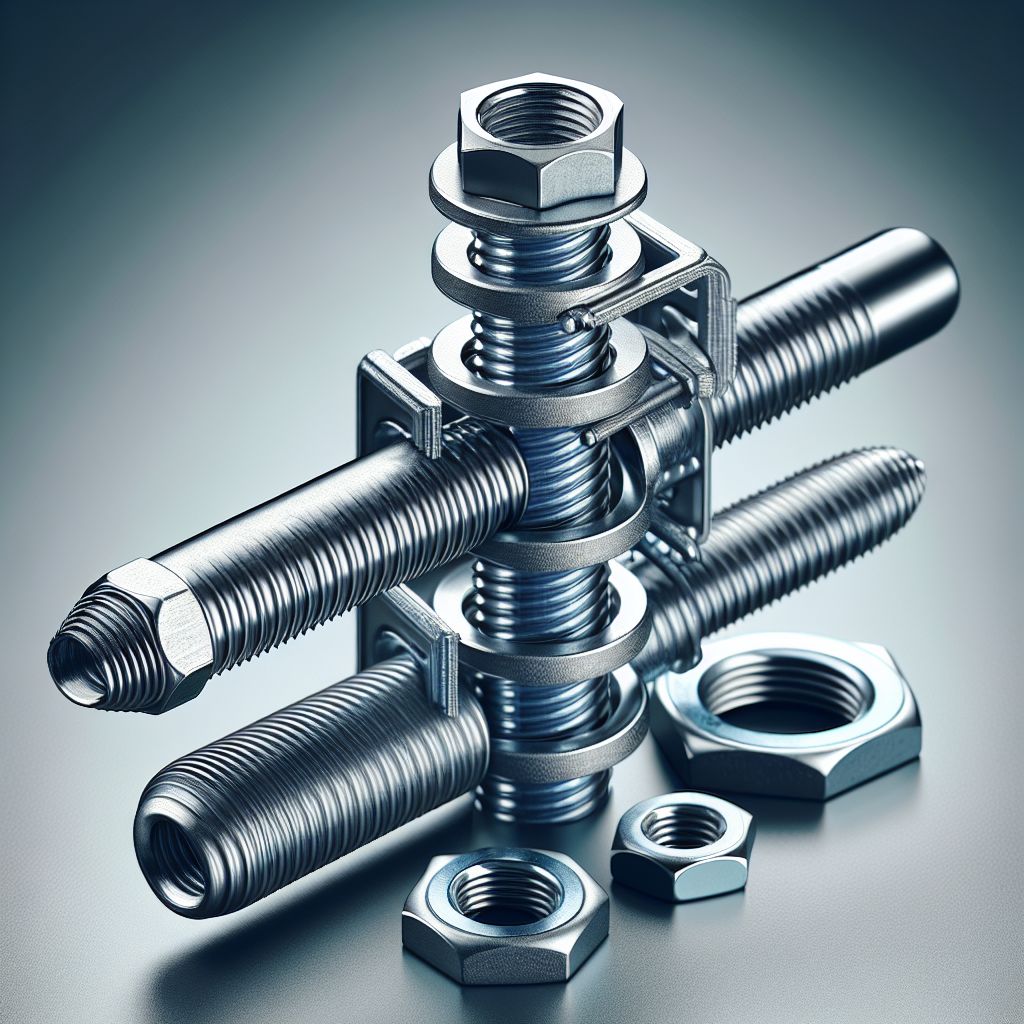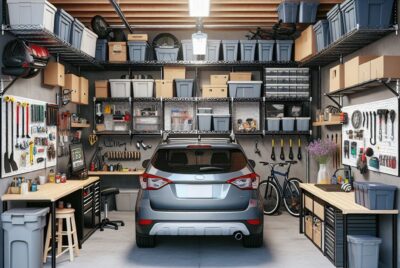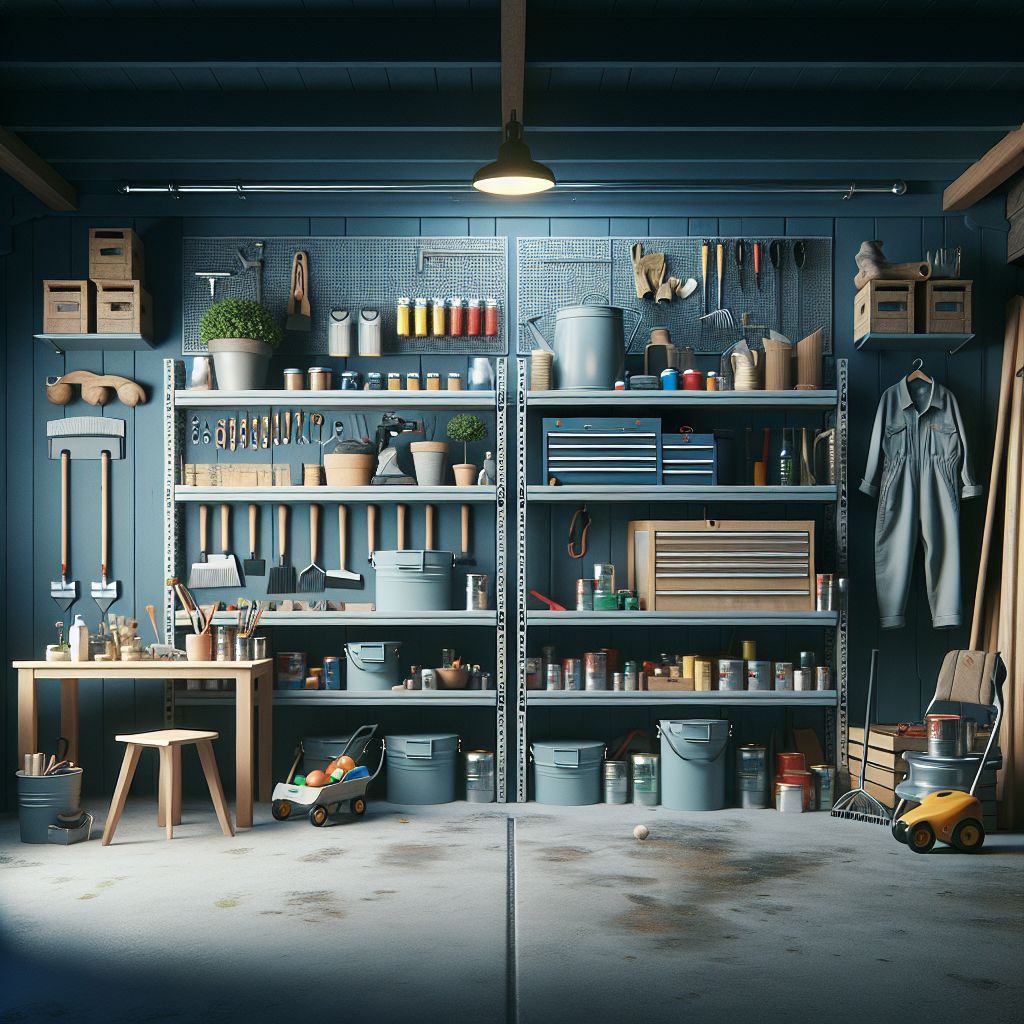Workshop Organization Guide: Best Power Tool Storage Solutions & Tips
Article-at-a-Glance
- Discover how to maximize space with innovative power tool storage solutions.
- Learn the benefits of categorizing tools for efficiency and creating a central workflow hub.
- Understand the importance of protecting your power tools from environmental damage and theft.
- Explore ways to adapt your storage as your tool collection grows and changes.
- Get tips on maintaining an ergonomic and personalized workshop that inspires creativity.
Why Tool Organization Fuels Workshop Innovation
Imagine walking into a workshop where every tool has its place, and every project starts without a hitch. That’s the power of organization. It’s not just about keeping things tidy, it’s about creating a space where creativity can thrive. When your tools are organized, you spend less time searching and more time crafting. And that’s when innovation happens.
Essential Power Tool Storage Solutions
Whether you’re a seasoned woodworker or just starting out, knowing how to store your power tools effectively is key to a productive workshop. The right storage solutions can extend the life of your tools, save space, and make every project more enjoyable. Let’s dive into some essential tips that will help you organize your power tools like a pro.
Maximize Your Space
Space is a premium in any workshop. To make the most of it, you need to think vertically and creatively. Wall racks, magnetic bars, and under-workbench drawers are just a few ways to free up valuable floor space and keep your tools in easy reach.
Wall-Mounted Racks: Going Vertical
They not only save space but also put your tools on display, making selection a breeze. Here’s how you can set up a wall-mounted rack:
- Measure your wall space and decide how many racks you’ll need.
- Choose a rack system that can handle the weight of your tools.
- Install the racks at eye level for easy access to your most-used tools.
Magnetic Bars: Secure and Accessible
Magnetic bars are perfect for keeping metal tools like wrenches, screwdrivers, and drill bits secure and accessible. Just mount a magnetic bar on the wall, and you’ve got an instant storage solution that’s both efficient and visually appealing.
Under-Workbench Drawers: Hidden Convenience
Don’t forget about the space under your workbench. Adding drawers there can provide hidden storage for less frequently used tools or accessories. This keeps your workspace clear for the task at hand. For more power tool storage ideas, explore creative solutions to make the most of your space.
Categorize for Efficiency
Organizing your tools by category not only makes finding them easier but also streamlines your workflow. Here’s how to categorize effectively:
- Group similar tools together, like drills with drill bits and saws with blades.
- Use drawer dividers or small bins to keep small accessories organized.
- Label everything. This simple step can save you loads of time.
Grouping by Tool Type
Grouping tools by type simplifies your search process. For example, keep all your cutting tools in one area and your fastening tools in another. This logical arrangement can help you work more intuitively and efficiently.
Sorting Accessories with Organizers
Accessories like screws, nails, and bits can easily become a jumbled mess. Use organizers with clear lids so you can see what’s inside without having to open each one. This simple step can save you time and frustration.
Create a Workflow Hub
Your workspace should be more than just a place to store tools, it should be a hub where workflow is seamless. Centralizing your charging stations and integrating your workstation with your storage are two ways to achieve this.

Centralized Charging Stations
Keep all your battery chargers in one place to create a charging station. This way, you’ll always know where to go for a fresh battery, and you’ll keep your workspace clutter-free.
Tools-at-Ready: Workstation Integration
Integrate your most frequently used tools into your workstation. This means having a designated spot on or near your workbench where these tools are always ready to go. It’s a simple change that can make a big difference in your productivity.
Example: Imagine you’re in the middle of assembling a bookshelf and realize you need your drill. Instead of rummaging through drawers or boxes, you reach to the dedicated drill holder right next to your workbench. In seconds, you’re back to work, saving time and keeping your focus.
Protect Your Investments
Power tools are an investment in your craft, and like any investment, they need protection. Protecting your tools from environmental damage such as dust and dampness, as well as from theft, is crucial. This not only preserves their lifespan but also ensures they’re ready to perform when you need them. For more insights on keeping your tools in top condition, check out our guide on garage shelving ideas.
Climate Control: Away from Dust and Damp
Workshops can be dusty, which can spell trouble for power tools. Dust can clog up moving parts and lead to premature wear. To combat this, store tools in airtight cases or cabinets when not in use. Additionally, controlling the humidity in your workshop can prevent rust and corrosion. A dehumidifier can be a worthwhile investment to protect your tools from damp air.
Lockable Cabinets: Theft and Childproofing
Security is another important aspect of tool storage. Lockable cabinets not only deter theft but also keep children from accessing dangerous equipment. Choose a sturdy cabinet with a reliable lock system, and you’ll have peace of mind knowing your tools are safe and sound.
Adapt and Expand
As your tool collection grows, your storage needs will evolve. That’s why it’s important to choose storage solutions that can adapt to your changing needs. Modular systems and expandable shelving offer the flexibility to reconfigure your space as required.
Modular Storage Systems
These systems, such as pegboards with adjustable hooks and shelves, allow you to customize your tool storage to fit your current project and tool set. They’re easy to rearrange, so as you acquire new tools, you can easily make room for them without a complete overhaul of your workshop layout.
Expandable Shelving: Room to Grow
Expandable shelving units are another great option. They can be adjusted in height and width, which means you can tailor them to fit new tools or materials as your collection expands. Plus, they’re typically easy to assemble and reconfigure.
Unclutter Your Charging Space
Charging batteries can lead to a tangle of cords and a cluttered workspace if not managed properly. Creating a dedicated charging area with clearly marked ports and Velcro straps can help keep this under control. Here’s how:
Dedicated Charge Ports
Designate a specific area of your workshop as the charging zone. Install power strips and label each port with the corresponding tool or battery type. This will not only help keep your workspace tidy but also ensure you always know where to find a charged battery. For more inspiration, check out these power tool storage ideas.
Battery Storage Safety Tips
Batteries, especially lithium-ion, need to be stored with care. For effective organization and safety, consider exploring best storage solutions to keep your workspace tidy and hazard-free.
- Store batteries at room temperature in a dry place.
- Avoid storing batteries in a fully charged or fully discharged state to prolong their lifespan.
- Keep them away from metal objects to prevent short circuits.
Maintenance Made Easy
Regular maintenance is key to keeping your power tools in top shape. Having a designated area for cleaning and minor repairs can make this task much more manageable. Let’s look at how to set up a maintenance-friendly space.
First, designate a small area of your workshop for tool care. Stock it with cleaning supplies, lubricants, and common spare parts. A simple pegboard with hooks can hold cleaning cloths, brushes, and small hand tools. This setup ensures that everything you need for routine maintenance is within arm’s reach, which encourages regular upkeep of your tools.
Furthermore, consider creating a ‘tool repair corner’. This dedicated space can be as simple as a small bench with a vice and some basic repair tools. When tools need a little more attention than just a wipe down, you’ll be ready to tackle the job without disrupting the rest of your workspace.
Maintaining your power tools is not just about keeping them clean, it’s about ensuring they are always ready for action. By dedicating a corner of your workshop to quick fixes and regular maintenance, you create a habit of caring for your tools after each use. This could be as simple as a small table with a vice, a set of screwdrivers, pliers, and wrenches. Add a shelf above for lubricants, spare parts, and manuals. The easier it is to maintain your tools, the more likely you’ll do it regularly, keeping them in prime condition.
Tool Repair Corner: Quick Fixes at Hand
Set aside a space for a tool repair corner equipped with a sturdy bench, a vice, and adequate lighting. Here, you can perform more extensive repairs or modifications to your tools without cluttering your main work area. Keep a toolbox or a set of drawers nearby with specialized repair tools so that everything you need is within reach when it’s time to troubleshoot or fix a tool.

“Storage and Organization in the Garage …” from www.chrislovesjulia.com
Not only does this keep your main workspace clear, but it also centralizes tool maintenance, making it less of a chore and more of a part of your regular workflow. Plus, it can be incredibly satisfying to fix your own tools, adding to the sense of pride you have in your workshop.
Remember, a well-maintained tool is a safe tool. By keeping them in top condition, you’re also ensuring your own safety and the quality of your work.
Ergonomics in the Workshop
Workshop ergonomics is about more than comfort, it’s about efficiency and safety. Tools should be stored at a height that doesn’t require you to bend or stretch excessively. Workbenches should be at an appropriate height to prevent back strain. Consider the flow of your workspace and arrange tools in a way that minimizes unnecessary movement.
Good lighting is also essential. Make sure your storage areas are well-lit so you can easily find and grab what you need. Adequate lighting reduces eye strain and the risk of accidents.
Placement for Comfort and Safety
Think about how you move around in your workshop. Place tools you use most often within easy reach. This might mean hanging them on a pegboard directly above or beside your workbench. For heavier tools, store them so you can lift them safely, using your legs rather than your back to prevent injury.
Also, consider the noise level of your tools. If possible, store louder tools like saws and sanders further away from your main work area to reduce noise exposure when they’re not in use.
Accessibility for All Users
Your workshop should be a place where everyone can work comfortably. If you share the space with others, make sure the storage solutions are adjustable to accommodate different heights and physical capabilities. This might mean having adjustable shelving or movable tool carts that can be positioned as needed.
Labels are also helpful for all users to quickly identify where each tool belongs, especially if they’re not as familiar with your organization system.
Personalize Your Power Tool Kingdom
Your workshop is your kingdom, and it should reflect your personality and work style. Customizing your tool storage not only makes your space more enjoyable but also can improve your workflow. Use colors, labels, and arrangements that make sense to you and inspire your creativity. For more inspiration, check out these garage cabinet ideas to enhance your space.
Whether it’s a color-coded system for tool types or custom-built holders that fit your tools perfectly, personalization can make your workshop uniquely yours.
Reflecting Your Style in Tool Storage
Think about what inspires you. Do you like a minimalist look with clean lines and hidden storage? Or do you prefer a more industrial vibe with tools on display? Use your style to guide your storage choices. For example, if you love vintage aesthetics, you might opt for antique cabinets or reclaimed wood shelves to store your tools.
Also, consider how you can display your favorite or most-used tools as a focal point. Maybe you have an antique hand drill or a high-end saw that deserves a special place on the wall. Showcasing these items can add character to your workshop while keeping them close at hand.
DIY Storage Solutions Tailored for You
If you can’t find the perfect storage solution, why not build it yourself? Creating custom shelves, racks, or cabinets allows you to tailor the dimensions and features to exactly what you need. Plus, it’s a great project that puts your skills to the test and adds a personal touch to your space.
Consider using materials that you already have on hand or repurposing old furniture for a unique and cost-effective approach. The satisfaction of using a storage system that you built yourself is unbeatable.
Frequently Asked Questions (FAQ)
Got questions? Here are some answers to common queries about power tool storage:
How do you create a workshop layout to best utilize space?
Start by considering the flow of your work. Place your workbench in the center if you need access from all sides, or against the wall if you’re tight on space. Use vertical storage like wall-mounted racks and shelves to maximize floor space. And remember to leave enough room to move around comfortably.
Think about which tools you use most and place them within arm’s reach of your primary work area. Less frequently used tools can be stored further away. Always plan for future purchases by leaving some room for additional storage.
What should you consider when choosing storage for heavy power tools?
Weight capacity is crucial. Make sure your shelving or racks can handle the load without sagging or breaking. For larger tools, consider mobile bases or carts that allow you to move them without lifting. Also, look for storage solutions that let you keep these tools at waist height to avoid bending over.
Can power tool batteries be stored on chargers?
- It’s generally safe to leave batteries on the charger, but it’s not necessary. Most modern chargers stop charging once the battery is full.
- For extended storage, keep batteries at a 40-50% charge in a cool, dry place.
- Avoid leaving batteries in extreme temperatures, as this can reduce their lifespan.
How do you manage cord storage for your power tools?
Use hooks or cord reels to keep cords organized and off the floor. Label each cord with the corresponding tool to avoid confusion. If possible, choose tools with detachable cords for easier storage and replacement.
What are some budget-friendly power tool storage solutions?
There are plenty of cost-effective ways to store your tools. Pegboards are inexpensive and offer flexible storage options. Repurposed furniture, like old cabinets or dressers, can be found for cheap at thrift stores or garage sales and turned into tool storage. And don’t underestimate the power of simple DIY shelves made from scrap wood.
Keeping your workspace organized is crucial for efficiency and safety, especially when it comes to storing power tools. Proper storage solutions can help you keep your tools accessible and in good condition, ensuring they’re ready for your next project. Whether you have a dedicated workshop or a shared space in your garage, implementing the right storage systems can make a big difference in your workflow.
*We may earn a commission for purchases made using our links. Please see our Disclosure to learn more.




